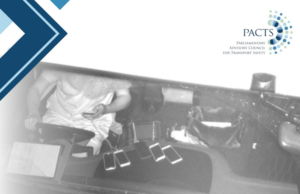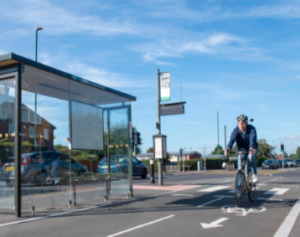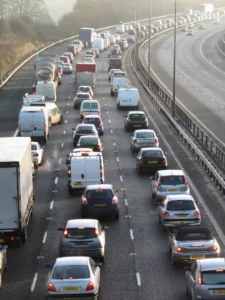There should be a industry-wide agreement on the way data for Connected and Autonomous Vehicles (CAV) is collected, processed and shared, according to CAV organisation Zenzic.
The Geodata report-analysis and recommendations for self-driving vehicle testing Zenzic consultation findings, highlights the need for industry-wide alignment on issues such as data hosting and common terminology used to create a large-scale platform for mapping data.
The report aims to help the self-driving vehicle industry agree on defining how mapping data can be shared between companies and authorities, to speed up the development of safe self-driving vehicles, without hindering competition. It also shows that solving the current fragmentation of geospatial mapping data is vital in ensuring and enabling self-driving vehicles to be safely on the road both in the UK and globally. It offers initial steps towards creating a consensus on mapping requirements based on industry-wide feedback and recommendations across six key areas: Data Formats, Data Quality and Resolution, Terminology, Minimum Safe Requirements and Standards, Government Data and Traffic Regulation Orders (TROs) and Data Hosting.
The findings are based on the input of organisations including Arcadis and Midlands Future Mobility and additional international partners.
The report also says that merging mapping data from regional sources will require streamlining to avoid multiple different ways of processing and handling data. It also finds that mapping data quality, specifically accuracy and precision of such data, is seen to be more important than resolution.
Zenzic says the connected and self-driving technology sector should follow the gaming, weather and BIM (Building Information Modelling) sectors when it comes to finding common terminology, in addition to working closely with BSI and the Open Geospatial Consortium. Currently both TN-ITS and ISO 20542 standards are widely used by equipment and vehicle manufacturers. Harmonisation between the two standards will take some time, so testing facilities must initially be able to accommodate both.Â
Daniel Ruiz, CEO, Zenzic said: “This report shows that the global self-driving vehicle development industry agrees that mapping data needs to be easily shareable for us to achieve the goal of having self-driving vehicles on our streets by 2030. When it comes to the maps which will form the basis of how self-driving vehicles see the world, the details matter, from how this data is shared, to what resolution of mapping data is deemed safe. The UK is well placed to lead the development of standards and regulation as organisations like OS and BSI have done some for decades.”
Natalie Stirrat, Geospatial Associate Technical Director at Arcadis, said: “The impact of digital disruption and the inevitable proliferation of new and exciting technologies will have a huge impact on future mobility. However, as autonomous vehicles increasingly become a reality, there are a number of important challenges that we need to address. While self-driving vehicles will have the potential to keep people moving, ease congestion and improve air quality, the issue of safety is also paramount. The need for accurate and precise geospatial data is required for all these elements. We need to understand where this data comes from, how it can be used to help mitigate risks and, most importantly, how citizens can be assured of the rigours of testing.”
Andrew Harris, Principal Engineer at WMG Warwick, said: “As an organisation at the forefront of intelligent vehicle research, WMG recognises the importance of accurate geospatial data in the future rollout of autonomous transport solutions. This report makes an important contribution to the understanding of what needs to happen to make autonomous transport a reality in the UK.”
Richard Woodling, Stakeholder Engagement Manager at OS, also responded to the report, he said: “The responses to the Geodata report have provided valuable insight and reinforce the importance of precise and accurate geospatial data. The comments highlight that work still needs to be done on adopting common data formats for connected and self-driving vehicles, and that the industry needs to focus on making sure minimum safe requirements of standards are clear, and that these standards regarding the exchange of road related data are harmonised with those around the world.
“At OS we believe that consistent, authoritative and trusted data provides a framework for safe operation, interoperability and open standards development. The responses to the Geodata report will help shape the geospatial and mapping requirements that will enable the mobility sector and accelerate self driving technologies.”






















